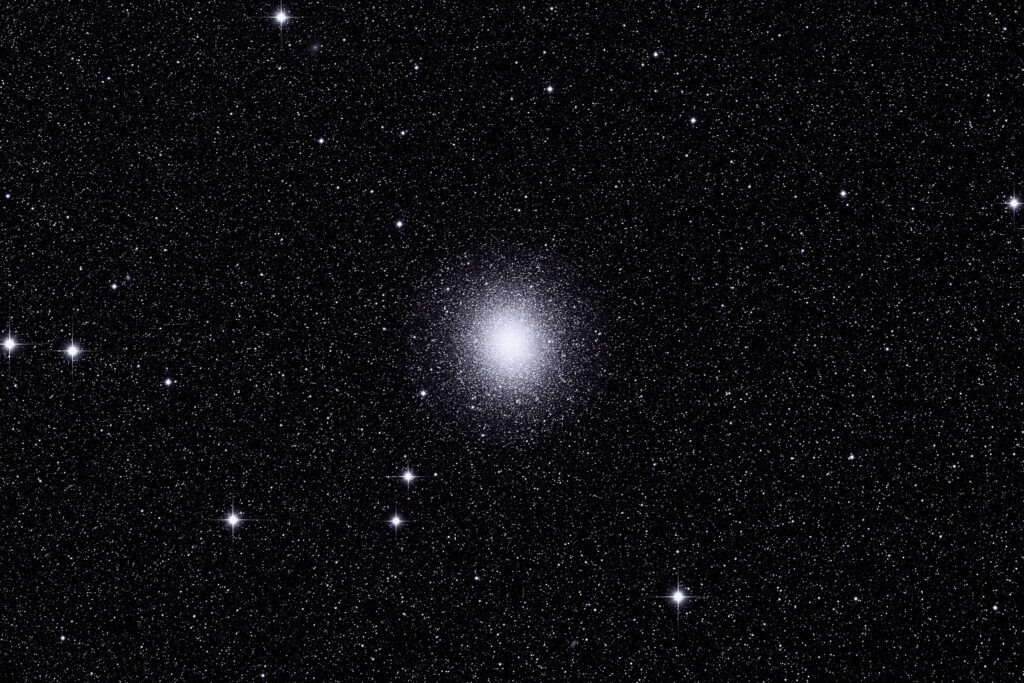The most magnificent example of a "globular" star cluster in our galaxy. The cluster was named by German astronomer Johann Bayer in his catalog of the brightest 1,564 stars, the "Uranometria," published in 1603. Bayer's star names were straightforward. He would assign a lower case Greek letter to stars in a constellation, beginning with the brightest, followed by the genitive form of the constellation name. To illustrate, the brightest star in the constellation Centaurus is "alpha Centauri" (literally, "alpha of Centaurus"). The second brightest is beta Centauri, and so on.
Bayer's catalog was compiled six years before Galileo first pointed a telescope at the heavens, and so he could not know that this magnificent star cluster was not a star. Since it appeared to be the 24th brightest "star" in the constellation, Bayer's catalog identified it by the 24th and last letter of the Greek alphabet, omega (hence, "Omega Centauri"). Edmond Halley discovered the true nature of this "star" in 1677, but the name has never been changed.
Globular star clusters are tightly compacted groups of hundreds of thousands of stars, in contrast to the far more common "open" or galactic star cluster that contain a few dozen to 1,000 or more stars that are less densely arrayed. Omega Centauri is the largest known globular cluster in our galaxy, consisting of several million stars at a distance of 30,000 light years. The stellar density in the core is an estimated one thousand stars per cubic light year (average separation of .1 light year between stars). Contrast this with the closest known star to our Sun, proxima Centauri, at a distance of 4.2 light years.
Omega Centauri is a southern hemisphere object, and is visible only in the southern portion of the United States in the Spring and Summer, when it can be seen near the southern horizon.
Omega Centauri is about 50% larger than the most prominent globular cluster in the northern hemisphere, M13 in Hercules.
It is also of interest that Omega Centauri lies along the Milky Way (the center of our Milky Way galaxy). This is evident by the large number of stars in the field of this cluster.
Omega Centauri
Date Taken:March 9, 2014
Location Taken:Siding Spring Observatory, NSW, Australia
Conditions of Location: Equipment Used:Takahashi FSQ106 apochromatic refractor, SBIG STL-11000 camera
Processing Used:Maxim DL and Photoshop
Distance from Location:15,000 light years
Constellation:Centaurus
Other Link:

I will never be tired or bored looking at the sky and all that is in it. To think that the universe keeps growing… they keep finding new galaxies! I am amazed at what God has created and to think that someday we can explore it all with the Creator as our guide, explaining how it all came to be and why He made each one and when. Someday, I will dance with God throughout the Universe surrounded by glittering stars, etc as the heavens ring with His music, His song, His singers. Thank you for sharing your pictures with us.